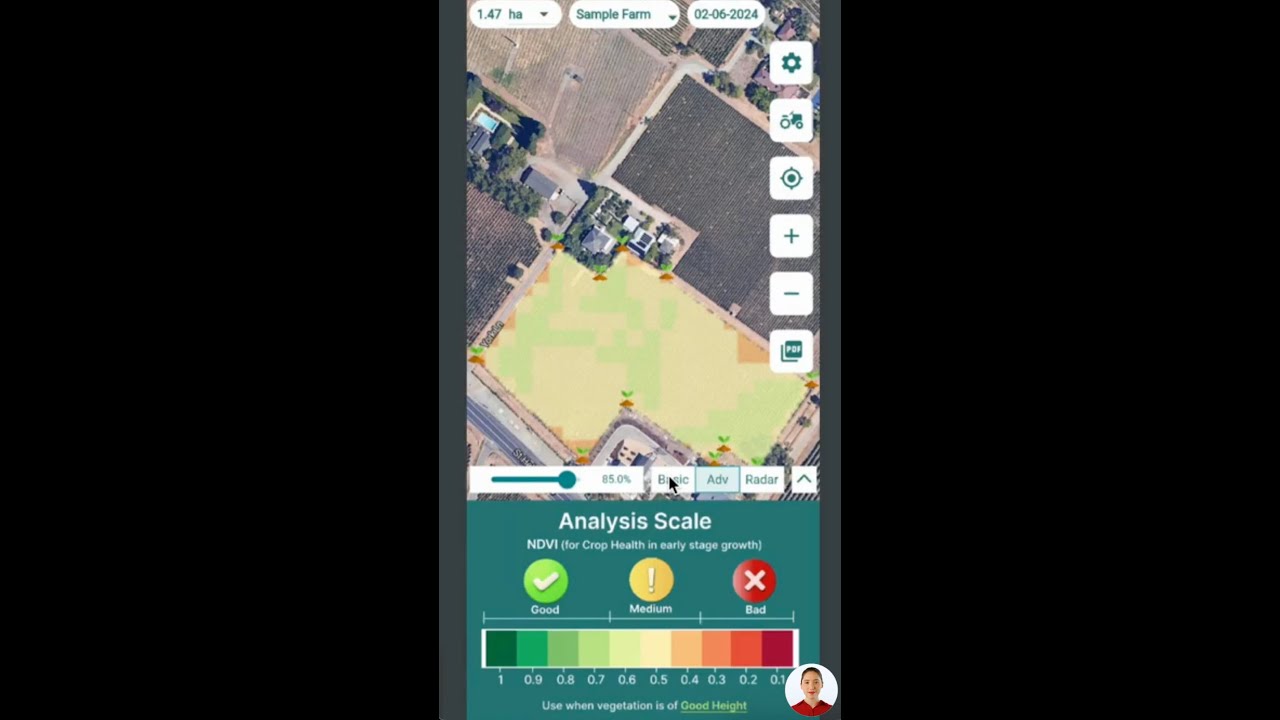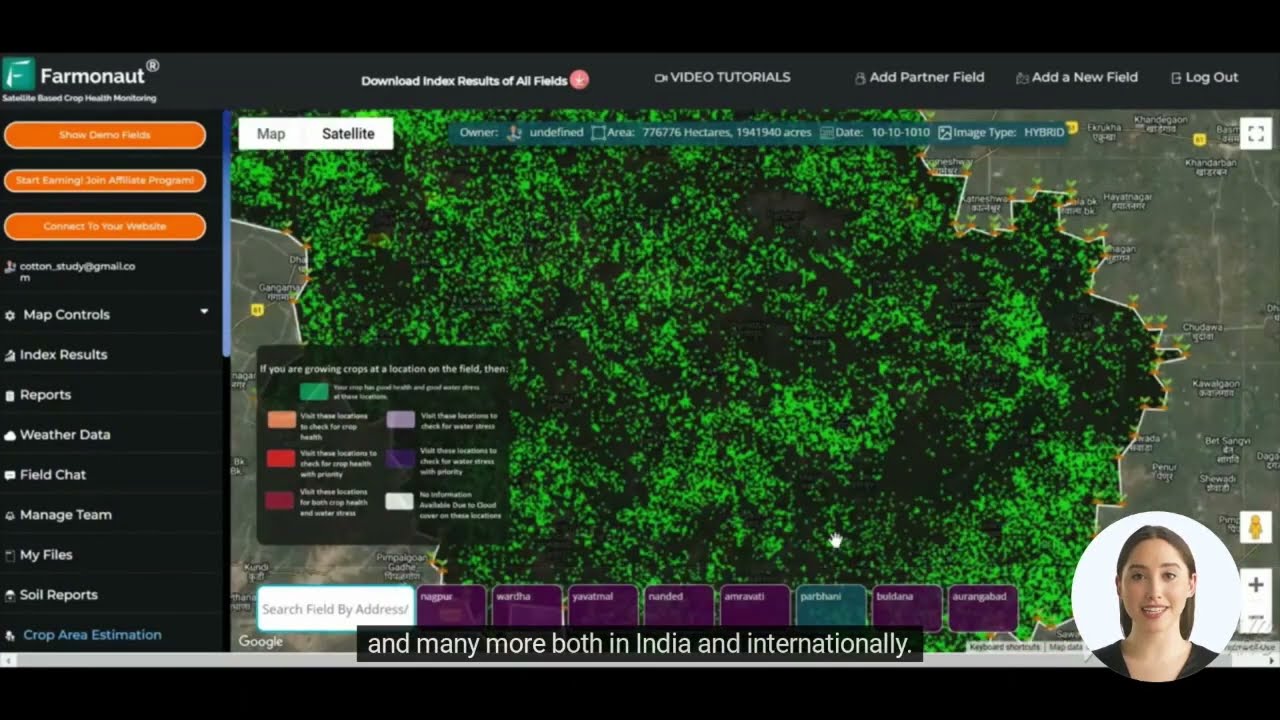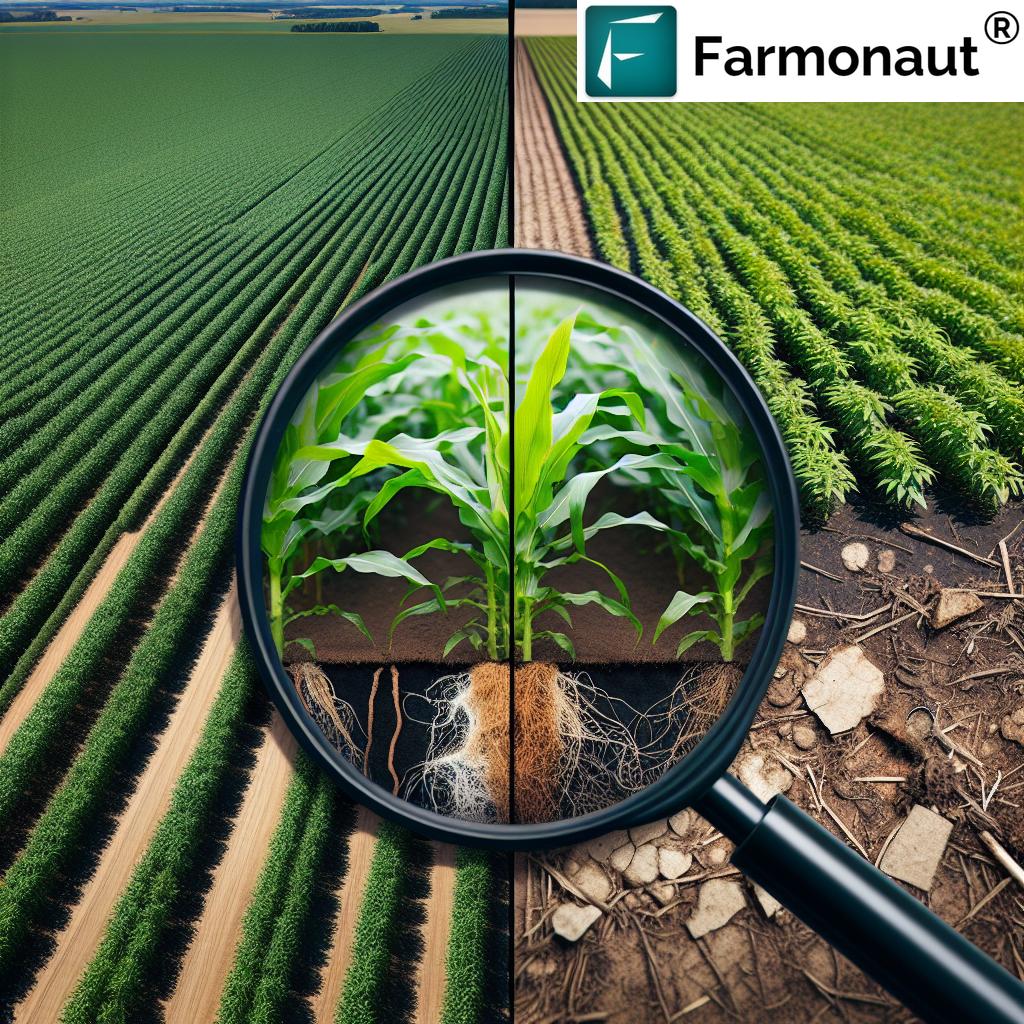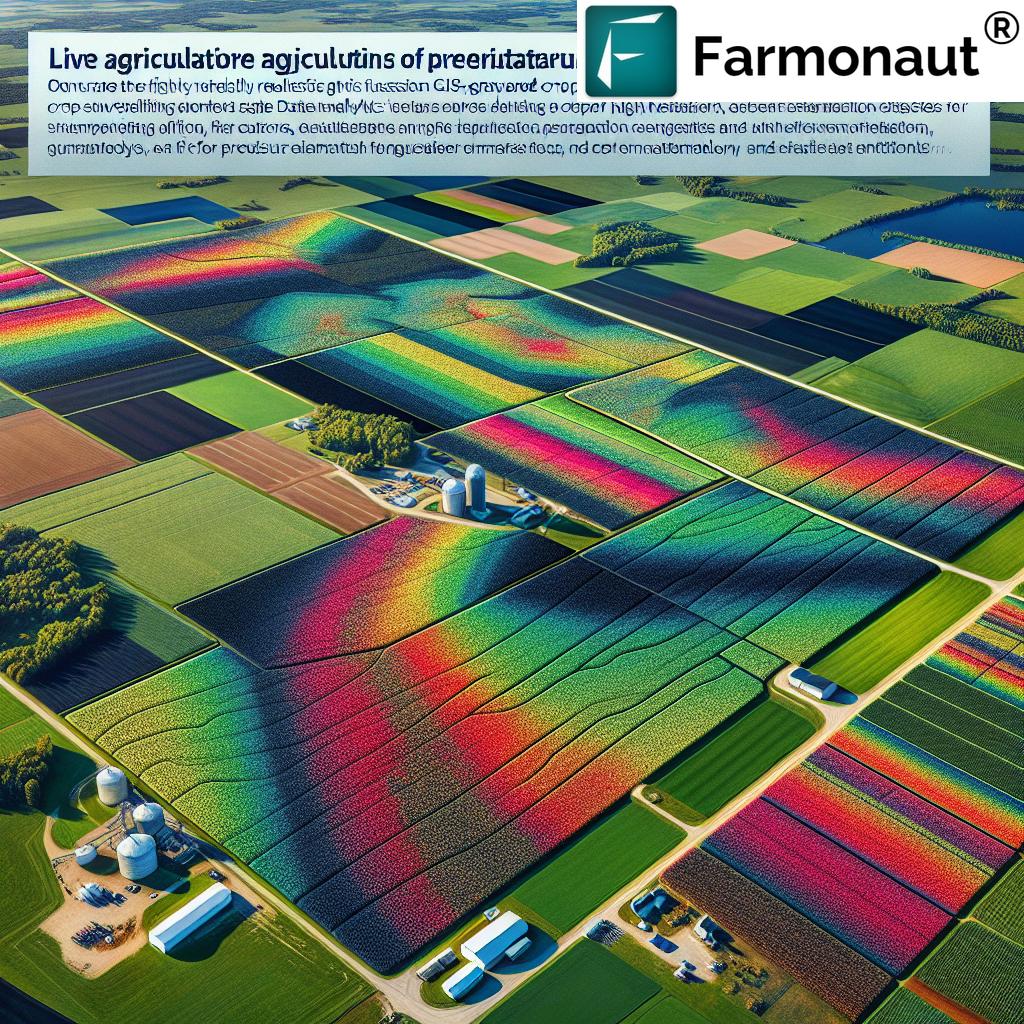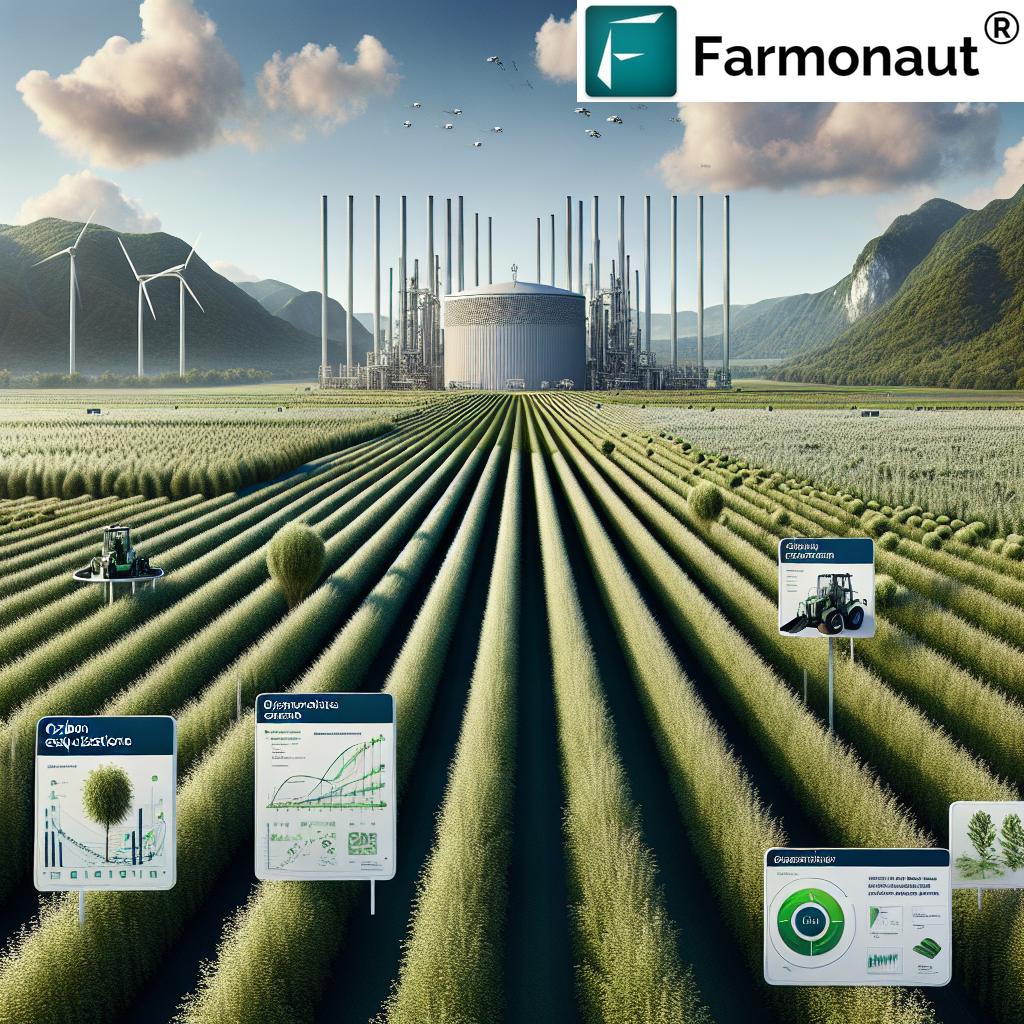Mastering Corn Nitrogen Management: Iowa Growers’ Ultimate Guide to Precision Application Timing and Weather-Smart Strategies
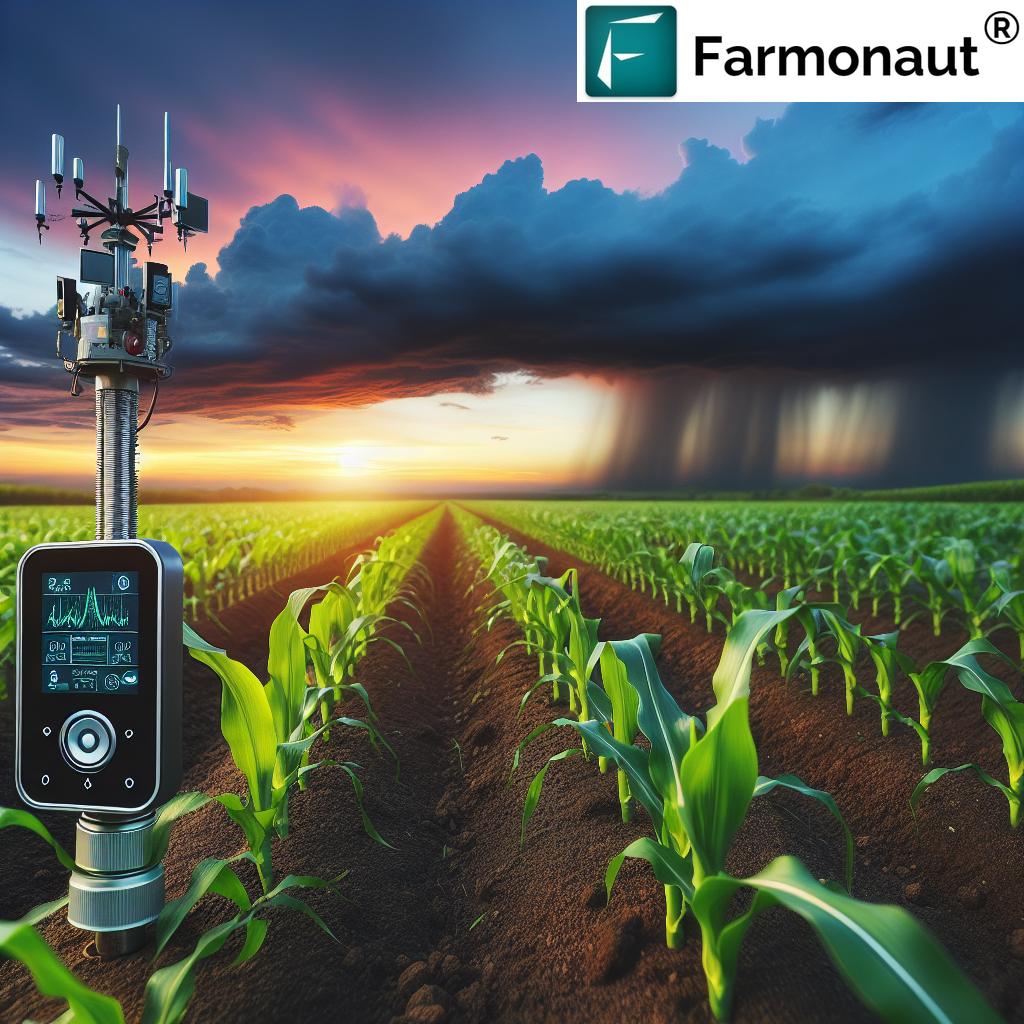
Welcome, Iowa corn growers! In this comprehensive guide, we’ll delve deep into the intricacies of nitrogen management in corn, exploring cutting-edge strategies for optimal nitrogen application timing and weather-smart techniques to maximize your yields. As we navigate through the complexities of corn production, we’ll uncover how precision agriculture techniques and innovative agtech solutions can revolutionize your farming practices.
“Corn plants absorb up to 70% of their total nitrogen requirement during a 30-day period around tasseling.”
Let’s embark on this journey to master nitrogen management and unlock the full potential of your corn fields.
Understanding the Importance of Nitrogen in Corn Production
Nitrogen is the cornerstone of corn production, playing a crucial role in plant growth, yield potential, and overall crop health. As Iowa growers, we understand that optimizing nitrogen use efficiency is not just about maximizing yields – it’s also about environmental stewardship and economic sustainability.
- Corn plants require substantial amounts of nitrogen throughout their growth cycle
- Efficient nitrogen management is key to reducing nutrient loss and environmental impact
- Proper timing and application methods can significantly improve nitrogen uptake and utilization
By mastering nitrogen management, we can achieve the delicate balance between meeting crop nutrient needs and minimizing losses to the environment. This is where precision agriculture techniques and weather-smart strategies come into play, allowing us to fine-tune our approach based on real-time data and field conditions.
The Corn Growth Cycle and Nitrogen Demand
To effectively manage nitrogen applications, it’s crucial to understand the corn growth cycle and how nitrogen demand changes throughout the season. Let’s break down the key growth stages and their corresponding nitrogen requirements:
| Growth Stage | Plant Nitrogen Demand | Ideal Application Window | Application Method | Weather Considerations | Estimated Nitrogen Rate (lbs N/acre) | Farmonaut Tool Integration |
|---|---|---|---|---|---|---|
| V1-V6 | Low | Pre-plant to early season | Side-dress, starter fertilizer | Soil temp > 50°F, moderate moisture | 30-50 | Soil moisture monitoring, weather forecasting |
| V7-V10 | Medium | Late spring to early summer | Side-dress, fertigation | Avoid wet conditions, temp 60-75°F | 60-100 | NDVI mapping, precipitation tracking |
| V11-VT | High | Mid-summer | Foliar spray, fertigation | Adequate soil moisture, temp 70-85°F | 80-120 | Crop health monitoring, nitrogen deficiency detection |
| R1-R6 | Declining | Late summer to early fall | Foliar spray (if needed) | Monitor for drought stress | 20-40 (if deficient) | Yield estimation, harvest planning |
Understanding these growth stages and their corresponding nitrogen demands is essential for developing a flexible and responsive nitrogen supply strategy. By aligning our applications with the plant’s needs and considering weather conditions, we can optimize nutrient uptake and minimize losses.
Weather-Smart Nitrogen Application Strategies
Iowa’s weather patterns can be unpredictable, making it challenging to time nitrogen applications perfectly. However, by leveraging weather data and soil characteristics, we can develop smart strategies to enhance fertilizer efficiency and protect against losses.
- Fall Applications: While convenient, fall nitrogen applications carry a higher risk of loss. If choosing this option, use a nitrification inhibitor and apply when soil temperatures are below 50°F to slow conversion to nitrate.
- Spring Pre-plant: This timing can be effective but watch for wet spring conditions that may delay planting and increase the risk of nitrogen loss.
- Split Applications: Dividing nitrogen applications between pre-plant and in-season can improve efficiency and reduce risk, especially in areas prone to leaching or denitrification.
- In-Season Applications: Applying nitrogen during the growing season allows for better matching of supply with crop demand, but requires careful timing and appropriate application methods.
To implement these strategies effectively, it’s crucial to have access to accurate weather forecasts and soil moisture data. This is where agtech solutions like Farmonaut come into play, providing real-time insights to inform decision-making.
Precision Agriculture Techniques for Nitrogen Management
Precision agriculture has revolutionized the way we approach nitrogen management in corn. By utilizing advanced technologies and data-driven insights, we can fine-tune our applications to match field variability and crop needs.
- Variable Rate Application (VRA): Use soil maps, yield data, and in-season imagery to create management zones and apply nitrogen at variable rates across the field.
- Remote Sensing: Utilize satellite or drone imagery to assess crop health and identify areas of potential nitrogen stress.
- Soil Testing and Mapping: Regular soil testing and creating detailed soil maps can help identify areas with different nitrogen-supplying capacities.
- On-the-Go Sensors: Implement real-time sensors that can measure crop nitrogen status and adjust application rates on the fly.
Farmonaut’s satellite-based crop health monitoring system is an excellent tool for implementing precision agriculture techniques. By providing regular NDVI (Normalized Difference Vegetation Index) updates, it allows growers to track crop health and identify potential nitrogen deficiencies before they become yield-limiting.
Soil Nitrogen Retention and Loss Prevention
Understanding the factors that influence soil nitrogen retention is crucial for developing effective management strategies. Iowa’s diverse soils and varying weather conditions can significantly impact nitrogen availability and loss potential.
- Soil Texture: Sandy soils are more prone to leaching, while clay soils may be at higher risk for denitrification under wet conditions.
- Organic Matter: Soils with higher organic matter content can supply more nitrogen through mineralization but may also tie up nitrogen temporarily.
- pH Levels: Soil pH affects nitrogen availability and the efficiency of certain fertilizers. Maintain optimal pH levels (6.0-7.0) for corn production.
- Drainage: Well-drained soils reduce the risk of denitrification, but may increase leaching potential. Consider controlled drainage systems where appropriate.
To minimize nitrogen losses and improve retention, consider these strategies:
- Use nitrogen stabilizers such as urease inhibitors (e.g., NBPT) or nitrification inhibitors (e.g., nitrapyrin) to slow the conversion of urea or ammonium to nitrate.
- Implement cover crops to capture excess nitrogen and reduce leaching during fallow periods.
- Practice conservation tillage to improve soil structure and water-holding capacity.
- Monitor soil moisture levels and avoid applying nitrogen to waterlogged soils.
By focusing on soil health and implementing these retention strategies, we can improve nitrogen use efficiency and reduce environmental impacts.
Leveraging Crop Nutrition Technology for Enhanced Efficiency
Advancements in crop nutrition technology offer exciting opportunities to optimize nitrogen management in corn production. These innovative solutions can help us fine-tune our approach and maximize the return on our fertilizer investments.
- Enhanced Efficiency Fertilizers (EEFs): Products like polymer-coated urea or stabilized nitrogen fertilizers can provide a more controlled release of nutrients, matching plant demand more closely.
- Biological Inoculants: Certain microbial products can enhance nitrogen fixation or improve nutrient uptake efficiency.
- Foliar Fertilizers: Specially formulated foliar sprays can supplement soil-applied nitrogen during critical growth stages or under stress conditions.
- Nanotechnology: Emerging nano-fertilizers may offer improved nutrient delivery and reduced environmental impact.
When considering these technologies, it’s essential to evaluate their fit within your overall management system and their potential return on investment. Farmonaut’s agtech solutions can help you track the effectiveness of these products by providing detailed crop health data throughout the season.
Explore Farmonaut’s API for integrating advanced crop monitoring into your management systems
Sustainable Farming Practices for Optimal Nitrogen Management
As stewards of the land, Iowa corn growers are increasingly focused on sustainable farming practices that balance productivity with environmental responsibility. Integrating these practices into our nitrogen management strategies can lead to long-term benefits for both our farms and the surrounding ecosystems.
- Crop Rotation: Alternating corn with nitrogen-fixing crops like soybeans can reduce overall nitrogen requirements and improve soil health.
- Buffer Strips and Riparian Zones: Implementing vegetative buffers along waterways can help capture excess nutrients and prevent water pollution.
- Precision Irrigation: Coupling nitrogen management with efficient irrigation practices can improve nutrient uptake and reduce leaching.
- Nutrient Recycling: Incorporating livestock manure or crop residues can provide valuable organic nitrogen sources and improve soil structure.
Farmonaut’s platform supports these sustainable practices by providing tools for precise resource management and environmental monitoring. By leveraging satellite data and AI-driven insights, growers can make informed decisions that align with sustainability goals.

Weather-Based Nitrogen Strategies for Iowa Corn Growers
Iowa’s climate presents unique challenges and opportunities for nitrogen management in corn production. By developing weather-smart strategies, we can adapt our practices to maximize efficiency and minimize losses under varying conditions.
“Weather-smart nitrogen strategies can increase corn yield by up to 20% while reducing fertilizer use by 15%.”
- Wet Springs: In years with excessive spring rainfall, consider delaying nitrogen applications or using split applications to reduce the risk of leaching and denitrification.
- Dry Conditions: During drought periods, focus on irrigation management and consider foliar nitrogen applications to supplement stressed plants.
- Temperature Fluctuations: Monitor soil temperatures closely, especially for fall or early spring applications, to ensure optimal microbial activity and nutrient availability.
- Extreme Weather Events: Have a contingency plan for rapid response to extreme weather, such as heavy rainfall or prolonged dry spells, to adjust nitrogen management accordingly.
Farmonaut’s weather-based nitrogen strategies provide real-time data and predictive models to help growers make informed decisions based on current and forecasted conditions. By integrating this information with field-specific data, we can develop robust nitrogen management plans that adapt to Iowa’s dynamic weather patterns.
Corn Yield Optimization Through Precise Nitrogen Management
The ultimate goal of mastering nitrogen management is to optimize corn yields while maintaining profitability and environmental sustainability. By integrating the strategies and technologies we’ve discussed, Iowa growers can push the boundaries of yield potential.
- Hybrid Selection: Choose corn hybrids that are well-suited to your local conditions and have high nitrogen use efficiency.
- Plant Population: Adjust plant populations based on soil fertility and yield goals to optimize nitrogen utilization.
- Tissue Testing: Use in-season tissue testing to fine-tune nitrogen applications and address any deficiencies promptly.
- Yield Mapping: Analyze multi-year yield data to identify field zones that consistently under or over-perform, adjusting nitrogen rates accordingly.
Farmonaut’s yield estimation tools can provide valuable insights into potential yields based on current crop health and historical data. This information can help growers make informed decisions about late-season nitrogen applications and harvest planning.
Preventing Nitrogen Deficiency in Corn
Recognizing and preventing nitrogen deficiency is crucial for maintaining optimal corn growth and yield potential. Here are some key strategies to keep your corn crop well-nourished throughout the growing season:
- Regular Scouting: Conduct weekly field walks to visually assess crop health and look for signs of nitrogen deficiency, such as yellowing of lower leaves in a V-shaped pattern.
- Chlorophyll Meters: Use handheld chlorophyll meters to quickly assess plant nitrogen status and identify potential deficiencies before they become visible.
- Soil Nitrate Testing: Implement pre-sidedress nitrate testing (PSNT) to determine if additional nitrogen is needed during the growing season.
- Aerial Imagery: Utilize drone or satellite imagery to identify areas of potential stress or variability across your fields.
Farmonaut’s satellite-based crop monitoring system can be a valuable tool in preventing nitrogen deficiency. By providing regular updates on crop health indices, it allows growers to identify potential issues early and take corrective action before yield is impacted.
Managing Nitrogen in Wet Conditions
Iowa corn growers often face challenges with excessive moisture, which can significantly impact nitrogen management. Wet conditions increase the risk of nitrogen loss through leaching and denitrification, requiring adaptive strategies to maintain crop nutrition.
- Drainage Management: Ensure proper field drainage to reduce waterlogging and minimize denitrification losses.
- Split Applications: Consider applying a portion of nitrogen later in the season to reduce the amount at risk during wet spring conditions.
- Nitrogen Stabilizers: Use nitrification inhibitors to slow the conversion of ammonium to nitrate, reducing the risk of leaching and denitrification.
- Controlled Release Fertilizers: Utilize products that release nitrogen gradually over time, matching plant uptake and reducing loss potential.
Farmonaut’s weather forecasting and soil moisture monitoring tools can help growers anticipate wet conditions and adjust their nitrogen management strategies proactively. By staying ahead of challenging weather, we can protect our nitrogen investment and maintain crop productivity.
Integrating Farmonaut’s Agtech Solutions for Corn Growers
As we’ve explored throughout this guide, leveraging advanced technology is key to mastering nitrogen management in corn production. Farmonaut offers a suite of tools designed specifically for corn growers looking to optimize their nitrogen strategies:
- Satellite-Based Crop Monitoring: Regular updates on crop health indices, including NDVI, allow for early detection of nitrogen stress.
- Weather Forecasting: Access to accurate, field-specific weather predictions helps in timing nitrogen applications for maximum efficiency.
- Soil Moisture Tracking: Monitor soil moisture levels to avoid applying nitrogen under unfavorable conditions that could lead to losses.
- Yield Estimation: Use AI-driven yield prediction tools to inform late-season nitrogen decisions and harvest planning.
- Historical Field Analysis: Analyze past performance data to identify trends and optimize nitrogen management strategies over time.
By integrating these agtech solutions into your nitrogen management plan, you can make data-driven decisions that lead to improved efficiency, reduced environmental impact, and ultimately, better yields.
Conclusion: Embracing the Future of Corn Nitrogen Management
As we’ve explored in this comprehensive guide, mastering corn nitrogen management is a complex but rewarding endeavor. By embracing precision agriculture techniques, weather-smart strategies, and innovative agtech solutions, Iowa corn growers can optimize their nitrogen use efficiency, boost yields, and contribute to sustainable farming practices.
Remember, the key to success lies in:
- Understanding corn growth stages and nitrogen demand
- Implementing weather-based application strategies
- Utilizing precision agriculture tools for targeted management
- Adopting sustainable farming practices
- Leveraging advanced crop nutrition technologies
- Integrating data-driven insights from platforms like Farmonaut
By combining these elements, we can create a flexible and responsive nitrogen management system that adapts to the unique challenges of each growing season. As we look to the future, continued innovation in agtech and a commitment to sustainable practices will drive the evolution of corn production in Iowa and beyond.
We encourage you to explore the tools and resources available through Farmonaut to enhance your nitrogen management strategies. Together, we can push the boundaries of corn production while safeguarding our precious natural resources for generations to come.
FAQ: Mastering Corn Nitrogen Management
Q: How often should I monitor my corn crop for nitrogen deficiency?
A: Regular monitoring is crucial. We recommend weekly field scouting, especially during critical growth stages (V6-VT). Utilizing Farmonaut’s satellite-based crop monitoring can provide more frequent updates on crop health indices.
Q: What’s the best way to apply nitrogen in a wet spring?
A: In wet spring conditions, consider split applications or using stabilized nitrogen products. Delay applications until soil conditions improve, and use Farmonaut’s weather forecasting to time applications optimally.
Q: How can I improve nitrogen use efficiency in my corn crop?
A: Improve efficiency by matching application timing to crop demand, using precision application techniques, implementing cover crops, and utilizing tools like Farmonaut for data-driven decision-making.
Q: What role does soil testing play in nitrogen management?
A: Soil testing is essential for determining baseline nitrogen levels and guiding application rates. Regular testing, combined with Farmonaut’s soil moisture monitoring, can help optimize your nitrogen management strategy.
Q: How do I adjust my nitrogen strategy for different corn hybrids?
A: Different hybrids may have varying nitrogen use efficiencies. Consult with seed suppliers for specific recommendations and use Farmonaut’s crop monitoring tools to track performance and adjust strategies accordingly.



